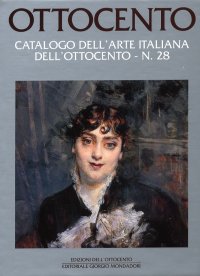Giovanni Boldini. Il Piacere
Rovereto, Mart, November 14, 2020 - February 28, 2021.
Edited by Beatrice Avanzi and Tiziano Panconi.
Genova, 2020; paperback, pp. 368, col. ill., col. plates, cm 24x28.
cover price: € 54.00
|
Books included in the offer:
Giovanni Boldini. Il Piacere
Rovereto, Mart, November 14, 2020 - February 28, 2021.
Edited by Beatrice Avanzi and Tiziano Panconi.
Genova, 2020; paperback, pp. 368, col. ill., col. plates, cm 24x28.
FREE (cover price: € 54.00)
Ottocento. Catalogo dell'Arte Italiana dell'Ottocento. Vol. 30
Milano, 2001; paperback, pp. 495, b/w ill., col. plates, cm 22x30,5.
FREE (cover price: € 40.00)
Ottocento. Catalogo dell'arte italiana dell'Ottocento. VOL. 28
Milano, 1999; bound, pp. 800, col. plates, cm 22x30.
FREE (cover price: € 77.47)
Venini Glass. Its History, Artists and Techniques. Catalogue 1921-2007
Deboni Franco
Umberto Allemandi
Translation by Graham H.
English Text.
Torino, 2007; 2 vols., clothbound in a case, pp. 512, b/w and col. ill., 385 col. plates, cm 25x35.
(Archivi di Arti Decorative).
series: Archivi di Arti Decorative
Other editions available: Edizione Italiana (ISBN: 88-422-1334-9).
ISBN: 88-422-1524-4 - EAN13: 9788842215240
Subject: Decorative Arts (Ceramics, Porcelain, Majolica),Essays (Art or Architecture),Glass
Period: 1800-1960 (XIX-XX) Modern Period,1960- Contemporary Period
Places: Venetian
Languages: 
Weight: 4.49 kg
These three catalogues contain all the reproductions of Venini items as distributed in shops; the most important pieces are grouped together on a scale of 1:10, in chronological order, accompanied by notes on the technique and materials used (blown, pulegosi, pietra dura, in corpo, flowers and fruit, lattimi, a mezza filigrana, a bollicine, sommersi, pesanti, diamante, corrosi, frames, a treccia, clocks, a rilievi, handles and ash trays). Since these catalogues are not for sale, they have become extremely rare, but indispensable for the historical and technical information they contain.











